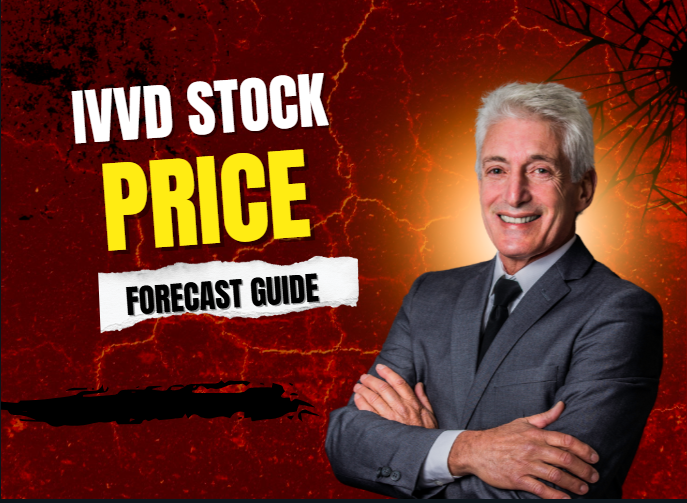FintechZoom.com | Your Gateway to Financial Insights
- Home
-
Stocks Updates
- News
-
Finance Tools
- Crypto Profit Calculator
- Savings Goal Calculator
- Compound Interest Calculator
- Currency Converter
- Tax Calculator
- Retirement Planner
- Net Worth Tracker
- Investment Portfolio Calculator
- Credit Card Payoff Calculator
- Monthly Budget Planner
- Mortgage Affordability Calculator
- Debt-to-Income (DTI) Ratio Calculator
- Fuel Cost Calculator
- Stock Return Calculator
- Loan EMI Calculator
- Latest Blogs
- Jobs Updates
Passive Stocks Explained: Build Wealth with Long-Term Investing

Passive stocks refer to investments held with minimal buying and selling over time. These are typically part of a long-term strategy that mirrors the performance of major market indices. Investors who choose passive stocks generally aim for stability and steady growth without reacting to every market fluctuation.
Table of Contents
- Basic Concept of Passive Investing
- How Passive Stocks Differ from Active Stocks
- Why Passive Stocks Attract Long-Term Investors
- Benefits of Investing in Passive Stocks
- Low Management Costs and Fees
- Reduced Risk through Diversification
- Consistent Returns Over Time
- Popular Types of Passive Stock Investments
- Index Funds (Like S&P 500, KSE-100)
- ETFs and Their Role in Passive Portfolios
- Dividend Stocks for Passive Income
- Best Passive Stocks to Consider Today
- U.S. Based Passive Stock Examples
- International and Pakistani Market Options
- Sector-Based Passive Picks (Tech, Healthcare, Energy)
- How to Start Building a Passive Stock Portfolio
- Choosing a Broker or App for Investing
- Setting Investment Goals and Budget
- Rebalancing and Monitoring with Minimal Effort
- Passive Stocks vs. Other Investment Options
- Comparison with Mutual Funds and Bonds
- Difference from Crypto or Real Estate Investment
- When Passive Stocks May Not Be Ideal
- Tools and Platforms to Track Passive Stocks
- Free & Paid Portfolio Trackers
- Mobile Apps for Passive Investment Monitoring
- Resources for Stock Research and Index Data
- Real Examples: How Passive Stocks Grow Over Time
- 5-Year Performance of Top Index Funds
- Case Study of a Simple Portfolio
- Long-Term Wealth Building with Small Contributions
- Final Thoughts on Passive Stock Investing
- Frequently Asked Questions About Passive Stocks
- What are passive stocks in simple terms?
- Are passive stocks a good choice for beginners?
- How do passive stocks differ from active ones?
- Can passive stocks generate real wealth?
- What is the ideal time frame to hold passive stocks?
- Are passive stocks safe during a market crash?
- Can I use passive stocks for retirement planning?
- How much money should I start with in passive stocks?
- Do passive stocks pay dividends?
- Are ETFs and mutual funds considered passive stocks?
- Can I automate investments in passive stocks?
- How are passive stocks taxed?
- Can passive stocks outperform active investments?
- Are passive stocks suitable for Islamic investing?
- Where can I track the performance of passive stocks?
Basic Concept of Passive Investing
The idea behind passive investing is to build a diversified stock portfolio that closely follows a specific market index. Instead of frequently trading or making high-risk bets, investors rely on time and broad market performance. This approach helps reduce the noise and confusion of daily market changes.
How Passive Stocks Differ from Active Stocks
Active stocks are often traded with the aim of outperforming the market, requiring constant monitoring and research. Passive stocks are chosen to reflect the index’s movement and held over time. This reduces transaction costs and lowers the impact of short-term volatility.
Why Passive Stocks Attract Long-Term Investors
For long-term investors, passive stocks offer simplicity and predictability. They eliminate the emotional highs and lows of market speculation. Many choose this method for retirement planning or wealth accumulation, especially when they don’t have time to manage their portfolio daily.
Benefits of Investing in Passive Stocks
Investing in passive stocks offers several compelling advantages, especially for those seeking stability. The biggest benefit is the lower expense ratio due to reduced trading activity and management fees. Additionally, passive investments tend to outperform many actively managed portfolios over time due to their consistent exposure to broad market trends. Investors also face less emotional stress since the strategy encourages holding through market fluctuations instead of reacting to every dip or rally.
Low Management Costs and Fees
One of the strongest benefits of passive investing is the lower expense ratio. Since there’s little trading and no active management, fees are significantly reduced. These savings accumulate and make a difference in long-term results.
Reduced Risk through Diversification
Because passive funds typically track entire markets or large sectors, they include dozens or hundreds of companies. This natural spread means that losses in one area are often offset by gains in another, offering a safety net.
Consistent Returns Over Time
Over many years, passive stocks have delivered stable gains. While they don’t spike quickly, they show resilience. Historically, market indices like the S&P 500 have provided reliable growth, even after downturns.
Popular Types of Passive Stock Investments
The most common types of passive stock investments include index funds, exchange-traded funds (ETFs), and target-date retirement funds. Index funds and ETFs track specific market indices like the S&P 500, NASDAQ, or Dow Jones, offering diversified exposure without active management. Some investors also choose dividend-focused ETFs or sector-based funds to align with personal financial goals while keeping the strategy passive.

Index Funds (Like S&P 500, KSE-100)
Index funds are among the most widely used passive investments. They mirror well-known indices and include a wide mix of companies. This variety offers broad exposure and reduces the need to pick individual winners.
ETFs and Their Role in Passive Portfolios
ETFs are investment tools that bundle various stocks and trade like regular shares. They are cost-efficient, transparent, and easy to access. Many ETFs track major indices and are favored for passive strategies.
Dividend Stocks for Passive Income
Some passive investors select dividend-paying stocks for regular income. While their prices may shift, the dividend payments create a secondary stream of value. This is particularly useful for those seeking recurring cash flow.
Best Passive Stocks to Consider Today
Today’s best passive stock choices often include shares from well-established companies that consistently mirror the performance of major indices. Stocks within the S&P 500, especially those in sectors like technology, consumer staples, and healthcare, are frequently used for passive investing. Companies such as Apple, Microsoft, Johnson & Johnson, and Procter & Gamble are staples in many passive portfolios due to their stable growth, dividends, and market representation.
U.S. Based Passive Stock Examples
Options like Vanguard S&P 500 ETF (VOO) or iShares Core S&P Total U.S. Stock Market ETF (ITOT) represent strong examples. These cover a significant portion of the U.S. economy and are used by investors across the world.
International and Pakistani Market Options
Beyond the U.S., there are passive ETFs that include global exposure. In Pakistan, ETFs such as Meezan Pakistan ETF and UBL Pakistan Enterprise ETF give investors local diversification.
Sector-Based Passive Picks (Tech, Healthcare, Energy)
Investors looking to focus on specific industries often choose sector ETFs. Technology-focused funds like QQQ, healthcare-focused funds like XLV, and energy-focused funds like XLE provide passive exposure to targeted growth areas.
How to Start Building a Passive Stock Portfolio
Starting a passive stock portfolio begins with setting clear financial goals and risk tolerance. The next step is selecting a diversified mix of index funds or ETFs that align with your timeline and objectives. Automated investing platforms, such as robo-advisors, can simplify this process by suggesting asset allocations and rebalancing your portfolio regularly. Regular contributions, even small ones, help compound growth over time without requiring constant attention.
Choosing a Broker or App for Investing
Select a platform that supports ETF or index fund trading with low fees. Services like Robinhood, Moomoo, and Pakistan-based apps such as KTrade offer this access. Review their features before choosing.
Setting Investment Goals and Budget
Clarify your financial goals, whether it’s retirement, home buying, or education. Then decide how much to invest regularly. Consistency in contributions can build solid results, even if amounts are modest.
Rebalancing and Monitoring with Minimal Effort
While passive investing is low-maintenance, occasional portfolio checks help. Some platforms allow automatic rebalancing, keeping your investment proportions aligned with your plan.
Passive Stocks vs. Other Investment Options
Compared to active investing or speculative trading, passive stocks offer lower risk and more predictable outcomes over the long term. Unlike individual stock picking or day trading, passive investing doesn’t rely on timing the market or reacting to news cycles. While the returns may be moderate in the short term, the long-term performance often exceeds actively managed funds due to fewer fees and less emotional decision-making.
Comparison with Mutual Funds and Bonds
Mutual funds often have higher fees due to active management. Bonds offer security but lower returns. Passive stocks strike a middle ground, combining low fees with solid long-term performance.
Difference from Crypto or Real Estate Investment
Unlike crypto or real estate, passive stocks don’t demand active attention or large capital. They’re easier to enter, more liquid, and less complex, making them suitable for investors who value simplicity.
When Passive Stocks May Not Be Ideal
Those aiming for short-term gains or who enjoy active trading may find passive strategies limiting. These stocks require patience, as short-term price movements are largely ignored in favor of long-term growth.
Tools and Platforms to Track Passive Stocks
Investors can monitor their passive stock portfolios using a range of user-friendly platforms like Vanguard, Fidelity, Charles Schwab, and mobile apps such as Robinhood or M1 Finance. For deeper analysis and automation, tools like Morningstar, Personal Capital, and Yahoo Finance allow for portfolio tracking, rebalancing alerts, and performance benchmarking. Many of these tools offer free versions suitable for beginners.
Free & Paid Portfolio Trackers
Services like Morningstar and Yahoo Finance help track your holdings and assess performance. They provide useful analytics for passive investors who still want regular updates.
Mobile Apps for Passive Investment Monitoring
Apps like Acorns, Stash, and KTrade support mobile investing and make it simple to view and manage portfolios. These tools encourage regular investing through automation and accessibility.
Resources for Stock Research and Index Data
Sites like Bloomberg, FintechZoom, and PSX offer news, data, and updates relevant to index funds and passive stocks. Staying informed through reliable sources supports confident investing.
Real Examples: How Passive Stocks Grow Over Time
Passive stock portfolios have shown steady growth when left untouched over long periods. For instance, a $10,000 investment in an S&P 500 index fund made two decades ago would be worth significantly more today, even accounting for market crashes. These gains highlight the power of compound returns and market resilience. Many retirement portfolios have grown sustainably this way, proving that patience and consistency often outperform short-term speculation.
5-Year Performance of Top Index Funds
Looking at S&P 500-based ETFs over the past five years shows steady growth, despite market drops. This reinforces the long-term value of holding a broad market fund.
Case Study of a Simple Portfolio
A person investing $500 every month in a passive ETF for a decade would likely see substantial growth. The power of compounding and market recovery cycles turns small amounts into meaningful returns.
Long-Term Wealth Building with Small Contributions
Passive investing isn’t limited to high earners. Even modest monthly investments lead to impressive growth when sustained over 10 or 20 years. The strategy rewards consistency, not complexity.
Final Thoughts on Passive Stock Investing
Passive stocks make long-term investing more manageable. Their lower costs, broad exposure, and dependable growth patterns appeal to investors who prefer structure over speculation. For those who value time and simplicity, this approach remains one of the most reliable paths to wealth.

Frequently Asked Questions About Passive Stocks
Passive stocks have become a go-to choice for many investors in Pakistan and around the world who prefer long-term growth with low effort. This investing method focuses on holding a broad market or index-based portfolio over time, rather than actively trading. With rising interest in financial independence and stress-free investing, understanding how passive stocks work and what role they play in wealth-building is more important than ever. The following FAQs will help clear common doubts and provide helpful insights about passive stock investing.
What are passive stocks in simple terms?
Passive stocks are long-term investment assets that aim to mirror the performance of a market index. Instead of buying and selling frequently, investors hold passive stocks for steady growth. This approach involves fewer risks and lower fees. Passive stocks don’t rely on active decisions by a manager. They follow a “buy and hold” strategy over time.
Are passive stocks a good choice for beginners?
Yes, passive stocks are considered beginner-friendly due to their simplicity and stability. They help new investors avoid the pressure of frequent trading. With passive stocks, there’s less need to predict market trends. Beginners benefit from the long-term market averages. These stocks make it easier to enter the world of investing.
How do passive stocks differ from active ones?
Passive stocks are designed to follow the market, not beat it. Active investing involves selecting stocks and timing the market. With passive stocks, you invest in an index like the S&P 500 or KSE-100. This reduces fees and emotional decision-making. Active investing often has higher costs and unpredictability.
Can passive stocks generate real wealth?
Yes, passive stocks can build real wealth when invested consistently over time. Compounding returns play a major role in wealth accumulation. Since passive stocks track broader markets, they offer long-term growth. Many millionaires rely on passive investing strategies. Discipline and patience are key to seeing gains.
What is the ideal time frame to hold passive stocks?
Passive stocks are best held for the long term, typically 5–10 years or more. The longer you stay invested, the more you benefit from market growth. Passive stocks are not suited for quick profits or short-term trading. They work well with retirement or wealth-building goals. Time strengthens the power of compounding.
Are passive stocks safe during a market crash?
While no investment is 100% safe, passive stocks usually recover over time. During a crash, the value may drop temporarily. However, passive stocks reflect the market’s long-term direction. History shows that markets bounce back eventually. Holding through downturns is often better than selling in panic.
Can I use passive stocks for retirement planning?
Passive stocks are commonly used in retirement portfolios due to their low cost and consistent returns. They align with long-term investment goals like pension savings. Passive stocks allow you to grow your funds without constant management. Many retirement funds invest in broad market indices. Their steady performance suits long-term financial planning.
How much money should I start with in passive stocks?
You can start investing in passive stocks with even a small amount. Many platforms allow investments starting from Rs. 1,000 or $10. Passive stocks work well when you invest regularly over time. The key is consistency, not the initial amount. Over years, even small investments grow significantly.
Do passive stocks pay dividends?
Some passive stocks do pay dividends depending on the index or ETF. If the companies in the index pay dividends, so will your passive stocks. Dividends can be reinvested for greater growth. Passive stocks with dividends offer both income and capital appreciation. This makes them appealing for income-focused investors.
Are ETFs and mutual funds considered passive stocks?
Yes, many ETFs and mutual funds are classified as passive stocks if they track an index. They follow a fixed structure without frequent buying or selling. Passive stocks like index-based ETFs offer broad market exposure. They’re low-cost and easy to manage. Not all ETFs are passive, so choose wisely.
Can I automate investments in passive stocks?
Yes, passive stocks are ideal for automation through SIPs or auto-deposits. Most investment apps and brokers allow recurring investments. Automation supports discipline and long-term consistency. Passive stocks benefit from regular contributions regardless of market ups and downs. This strategy is known as dollar-cost averaging.
How are passive stocks taxed?
Taxation on passive stocks varies by country and investment structure. In most cases, capital gains tax applies when you sell at a profit. Dividends from passive stocks may also be taxed. However, long-term holding often results in lower tax rates. Consult a tax advisor for accurate details.
Can passive stocks outperform active investments?
Over time, passive stocks often outperform actively managed funds due to lower fees and fewer errors. Studies show that many active managers fail to beat the market. Passive stocks avoid risky bets and emotional trading. Their steady growth can surpass many active strategies. Patience often wins the race.
Are passive stocks suitable for Islamic investing?
Yes, there are Shariah-compliant passive stocks and ETFs that follow halal investing principles. These passive stocks avoid interest-based or non-compliant companies. Investors can find Islamic indices and funds that meet religious guidelines. They combine faith-based values with long-term growth. Always verify compliance before investing.
Where can I track the performance of passive stocks?
You can track passive stocks using platforms like TradingView, Yahoo Finance, or your broker’s app. These tools show real-time data, charts, and index performance. Passive stocks are easier to monitor due to less volatility. Set alerts or review them monthly. Their stability reduces the need for constant checking.













No Comments